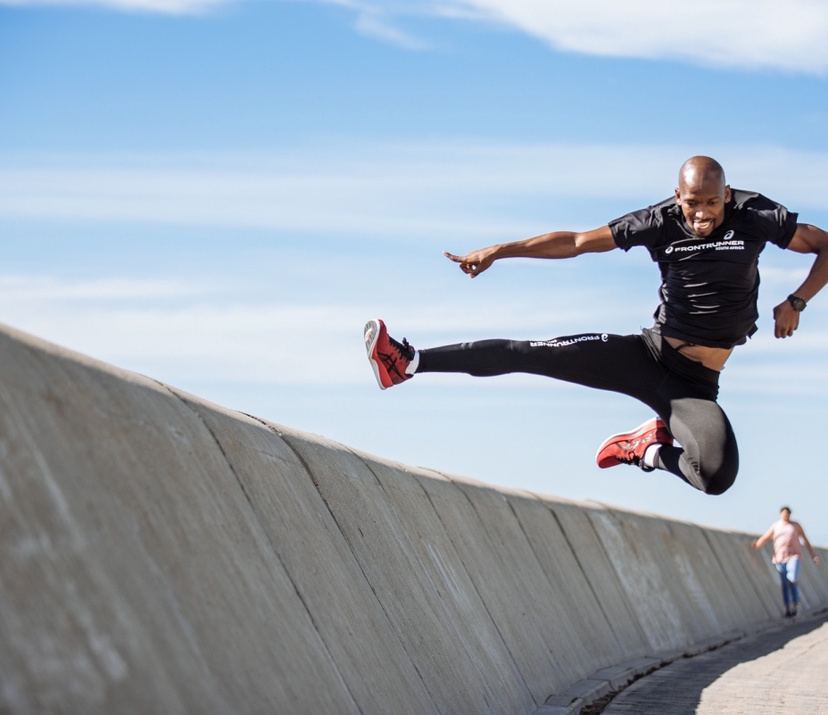Every runner has a story of some or other injury they've struggled through; some critical training period they had to cut short because their foot, knee, hip or shins were painful. Running injuries seem to be par for the course in our sport, but do they really need to be?
We got Dr David de Klerk to highlight some ways to manage and avoid running injuries:
START LOW AND SLOW – The best way to start running is slowly. Often when one discovers a newfound passion for something, there is a great temptation to dive headfirst into it with unbridled enthusiasm. But this can be a little bit of a problem if your obsession is running. Competing in and enjoying sport is as much about knowing when to stop as it is knowing when to go! If you are just starting out with running, think about carrying out a run/walk pattern (e.g. run for 4 minutes, walk for 1 minute). When you change pace, the combination of muscles you are utilising changes to. This gives the muscles you use to run a moment to relax and recover while others shoulder the burden of your bodyweight.
REST IS BEST – Nobody feels like they are making any progress when they lie on the couch but sometimes you are! With respect to physiology and exercise, we often refer to the terms ‘fitness’ and ‘fatigue’. The two terms are self-explanatory and refer to your physiological capability to run (i.e. how far, how long and how fast you can go) and your level of accumulated exertion respectively. Fatigue accumulates faster than fitness. This is bad news because it means that the body gets tired quicker than it gets fitter... But it is also good news because, conversely, fatigue also disappears faster than fitness. This means that you can rest for 3 days and come back to your training program fresh without having lost any fitness. Bottom line: when taken for the correct amount of time rest actually makes you faster!

PEACE AND LOVE – No, I’m not digressing from running to encourage you to join a hippie movement! The words ‘PEACE’ and ‘LOVE’ refer to an acronym used in sports medicine to memorise the management of injuries in the short (PEACE) and long-term (LOVE). I’ve included an infographic from the British Journal of Sports Medicine to explain the terms.
Important points to note are the avoidance of anti-inflammatory drugs (ibuprofen, aspirin, diclofenac etc.) and NOT icing (much of the current evidence suggests icing is not a good idea). If you’d like to read further about the concepts of ‘PEACE’ and ‘LOVE’, here’s a link to the page on the journal's website from which the infographic comes.
A side note: If you are unsure whether you can run through an injury, slow down. Go for a short run at an effort lower than what you are used to and see how you feel over the next 24 hours. If your pain does not worsen, you can keep it up! If it does, take a few days off. Better safe than sorry…
ONE THING AT A TIME – Ever heard of the concept of ‘training load’? Training load (TL) is a metric used to loosely track and assess the relative cardiovascular strain of exercise. It is calculated as such: TL = time in HR zone in mins x zone number (e.g. 20 minutes in zone 5 is equal to a training load of 100). Tracking TL is a nice way of assessing how hard you asked your body to work on a particular day or over a particular week.
You can increase your training load in two ways: run longer (increased time) or run harder (higher zone value). Take note, you should never increase both at once! A critical rule in sport and particularly in running- where there is a great deal of strain placed on your musculoskeletal system- is to never increase intensity and duration at the same time. If running longer and running harder both cause training load to increase, then if you were to do both at the same time, you would see an exponential rise in your training load! This is a recipe for disaster when it comes to running injuries.
Start experimenting with training load and see how changing the intensity or duration of a specific workout affects the value. You will quickly start to appreciate how easy it is to over-train. If you run harder and longer every day, you are going to get injured. I’ll say it again: choose which variable you are working on (duration or speed) and only increase that one variable at a time.
CROSS TRAIN – Most runners don’t do anything other than run. In any sport, an athlete can be judged based on their ‘peripheral’ and their ‘central’ fitness. Peripheral fitness refers to the ability of a particular group of muscles to perform a particular act, such as cycling or running. Central fitness, on the other hand, refers to your cardiovascular and respiratory systems’ (i.e. your heart and lungs) ability to pump blood to any group of muscles involved in any sport.
In order to excel at a discipline, you must train the specific muscles involved in that sport i.e. if you want to run well, you need to run a lot. While cycling or swimming may only take you so far in running, remember that you are training central fitness regardless of what sport you are doing. As an added bonus, when cycling, for example, blood flows to different groups of muscles than those involved in running, but there is some parallel flow to the next-door muscles too. This means that you can train your central cardiorespiratory fitness while promoting active recovery in those groups of muscles involved in the peripheral act of running!
If you are serious about your running and your ability to perform consistently, strength training in the gym should also be at the top of your list. Start by allocating just one day a week for this and work your way up. If you aren’t sure what to do, start by focusing on your glutes and other hip stabilisers- these are where much of your power and stability come from in running. Dedicating time to conditioning these muscles will make you a more stable, less injury-prone runner. This ultimately allows you to train more which makes you faster!



